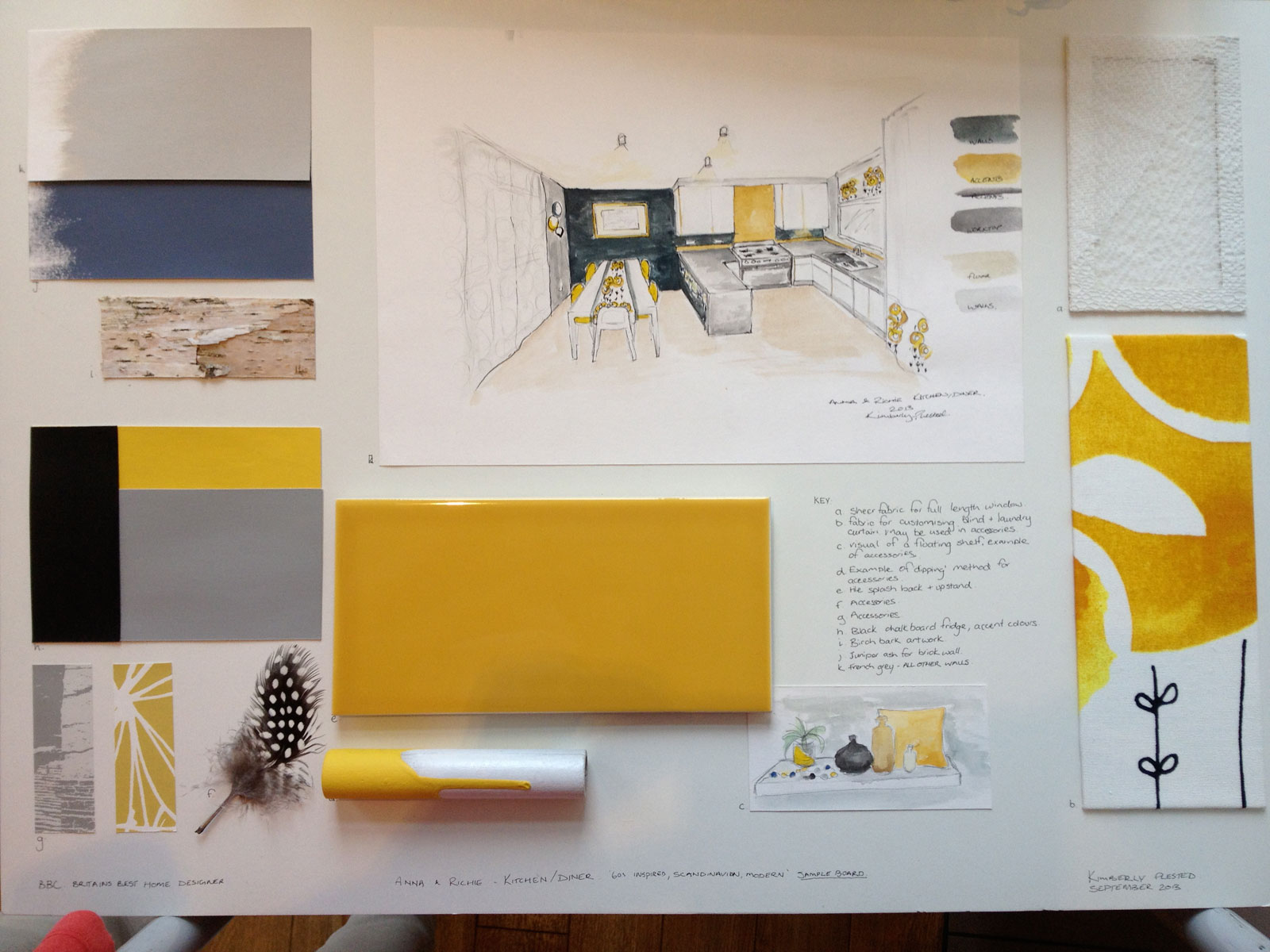We’re artists. We have visions of what we think will be beautiful or delightful, and we often can’t wait to roll up our sleeves and bring it to life. But, before all that, we have to get it on a mood board and sell the right story to our client. That can be a challenge.
Here are four steps we take that work for us.
1. Show Them Early Versions
We’re all perfectionists. Otherwise, we’d be doing something else. But, waiting to show the client an impeccable final version is just asking for disappointment. Chances are, your vision won’t be the client’s vision.
So, I imagine my early mood boards as a series of starting points. I’m trying to start an exchange with the client. We’re riffing. Our choices will feel organic and we’ll own the direction together because we got there that way. We’ll find perfect through the process.
Of course, don’t not prepare. Just wear your ideas loose like a light jacket. Changing into something new can be a refreshing change of pace. So, I like to pin concepts, product images and whatever else inspires me onto my mood board. The extra magic comes in keeping all those details attached to all those pieces.
2. Start with a First Choice
In my experience, every artist has their favorite starting point. A writer might start with a character. A musician might start with a chord voicing. And none of them are wrong, really.
But starting with something is a must—at least for me. Otherwise, my chances of hitting a creative block increase. There are too many choices. Everything feels like a false start. I abandon a choice and embark on a new one and then find another.
My favorite place to start is a pattern or a texture. I treat it like my foundation. It gives me a sense of color and feeling. I start to think about the space as warm or soft or organic or lively. Committing to that first choice liberates my process by limiting it. It might not be my centerpiece ultimately, but it becomes my touchstone when I’m thinking about what’s next.
3. Use Signature Objects
For me, that foundational choice helps me discover another key to my mood board: signature objects. I always recommend to my friends to only pick a few signature objects that convey the concept. You might never use your signature objects in the actual design and every single design element you’re excited about might not make it into your mood board, but those foundational objects establish a greater theme.
What does your foundational choice inspire directly? What feels “in the family”? Sometimes these pieces create a unified theme that feels familiar other times, it’s something more disparate and abstract. Either way, these few signature pieces give us a sense of the world we’re creating. They give us little subtextual clues our mind clicks into, whether we ever see those signature objects or not.
4. Add Evocative Writing
At heart, I’ll always be a writer. I read before bed every night and I unwind with my blog. So, my mood board always has a few notes. In my mind, sometimes, I return to a phrase or an idea enough I want those words in the client’s mind also.
Often, there’s a fun surprise or discovery. The client sees the room in a different emotional light. We start to find new ways of bringing those sentiments to life in the space. Other times, they connect with the text and we see the room from a new perspective. What we say can feel so much more personal.
Fohlio’s FF&E specification tools provide a seamless workflow for designers to collect product information from the web instantly and turn them into professional specs, tear sheets and mood board. Get a free demo here.

Hope these tips help step up your next mood board. Let us know what you think in the comments! How do you approach your mood board?
Featured image from Sophie Robinson.
